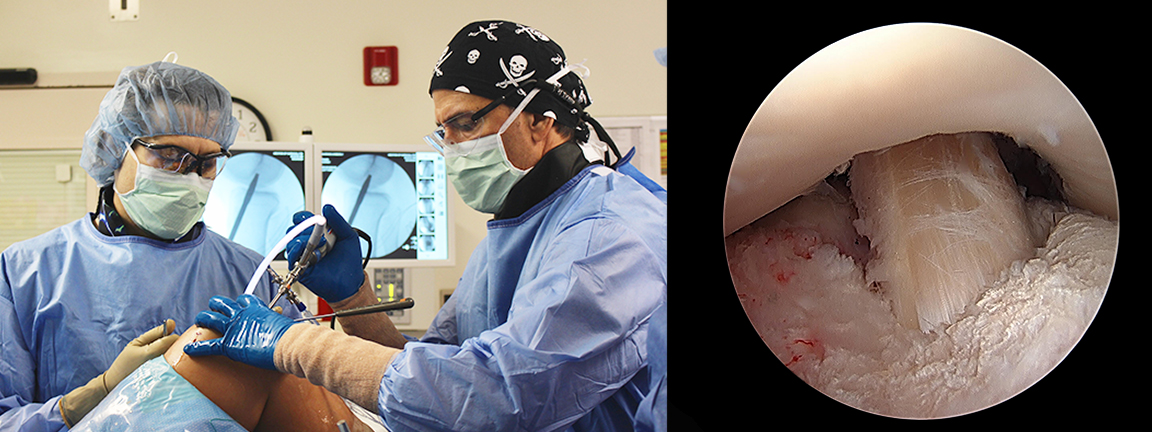
There are many controversial choices when it comes to selecting a graft for ACL reconstructive surgery. Though there are other graft options including Hamstring tendons, Quadriceps tendon or Cadaveric tissue, "Autologous" Bone-Patella tendon-Bone is considered the gold standard for high level athletes that participate in twisting, pivoting and deceleration type sports.
In most instances, surgeons will choose a graft type irrespective of a patient’s level of activity. This is usually consistent with a technique learned during their fellowship training, ease of graft harvest (hamstrings) or their desire to use pre-formed cadaveric tissue graft . Having trained in all harvest techniques, I truly believe that autologous Bone-Patella tendon-Bone graft is the graft of choice.
Several studies by the American Journal of Sports Medicine, have confirmed that Hamstring tendon use in ACL reconstructive surgery has a higher incidence of failure, knee joint laxity, infection, arthritis, delayed healing time, graft slippage and hamstring weakness (most noted in deceleration type activities). Although hamstring graft may be considered on occasion in the skeletally immature athlete, it is often considered as a graft option for the low demand, non-contact athlete. The literature also supports that the use of cadaveric tissue in the young high demand athlete has an extremely high failure rate.
Upon review of surgeon's graft choices throughout the nation, more than 75% of surgeons utilize autologous Bone-Patella tendon-Bone grafts during ACL reconstructive procedures in professional and/or collegiate athletes. This graft has been described as having a lower incidence of failure, better fixation, quicker incorporation into bone and the highest rate of return to full pre-injury activities, including sports.
Over the last 20 years, I have used Bone-Patella tendon-Bone in the majority of my high level athletes. There has been no reported weakness subsequent to harvesting this graft type. Although prior literature describes that this technique may predispose a patient to occasional anterior knee pain and/or tendinitis, with careful graft harvest, bone grafting to the patella defect and repair of the patella tendon site, these postoperative symptoms have become negligible.
It is true that surgeon experience, state-of-the-art anatomic technique and proper fixation/ tensioning methods have a significant bearing on the results of this procedure; but there is also enough evidence supporting that proper graft choice significantly contributes to the athletes’ ability to return to sports at a competitive level with excellent long term results.





